Background and description
Sweden was not immune from the naval arms race in the early 20th century. After dissolving the union with Norway in 1905, the situation was tense with the Russian Empire in the east, Germany south of the Baltic Sea, and Norway, traditionally being an Anglophile country, to the west. In 1911, battle-ready units from the Royal Navy and the Imperial German Navy cruised around in the North Sea. Due to the perilous atmosphere brought about by these tensions, and as the latest Swedish coastal battleship Oscar II was a typical pre-dreadnought ship (with two 8-inch (203 mm) guns and a maximum speed of 17.8 knots (33.0 km/h; 20.5 mph)), the need for a new class of ships was pressing. Seaworthiness, armament, armour and speed, all had to be improved according to the multiple new technologies that had arrived with the naval arms race that followed the launch of the British HMS Dreadnought. In 1911, the parliament voted (with a small majority) funds for the building of the new vessel, varying in size from 4,800 to 7,500 metric tons (4,700 to 7,400 long tons) and with armaments and speed in various arrangements accordingly). The postponement of funding for HSwMS Sverige by Prime Minister Karl Staaff had a significant impact on the "Pansarbåtinsamlingen" fundraising campaign. The campaign, which had aimed to raise 12 million Kronor for the ship, was put on hold as a result of the political uncertainty. Despite initial political uncertainty, the fundraising campaign for Sverige was successful, thanks to the support of King Gustav V. The campaign raised 15 million Kronor in just over three months, an impressive achievement. The new government accepted the money and let the contract for the ship, which was named Sverige for the people who had paid for it. [1]
After the outbreak of World War I, two more ships were ordered which had a slightly changed appearance, the two bearing the names of the King and Queen of Sweden.
Note that while the ship is listed as a battleship in Jane's Fighting Ships , 1938 edition, technically it is a coastal defence ship, a class which was commonly used in Nordic countries. The navies of Finland, Norway, and Denmark made use of similar ships. However, the Swedish Navy used the Sverige-class armored warships as the core of battle groups in the same manner as other navies used battleships.
Svierge had an overall length of 119.72 metres (392 ft 9 in), a beam of 18.63 metres (61 ft 1 in) and a maximum draught of 6.25 metres (20 ft 6 in). [2] The ship displaced 6,852 long tons (6,962 t ) at standard load and 7,516 long tons (7,637 t) at deep load. [3] A dozen Yarrow boilers provided steam at a pressure of 18 kg/cm2 (1,765 kPa ; 256 psi ) to four Curtis direct-drive geared steam turbines that each drove a single propeller shaft. Fuel oil could be sprayed onto the coal in the boilers to maximize steam pressure. The engines were rated at a total of 20,000 shaft horsepower (15,000 kW ) that was designed to give her a speed of 22.5 knots (41.7 km/h; 25.9 mph). [4] Svierge carried up to 665 long tons (676 t) of coal and 100 long tons (102 t) of fuel oil that gave her a range of 2,720 nautical miles (5,040 km; 3,130 mi) at a speed of 14 knots (26 km/h; 16 mph). [5] The ship had a complement of 443 officers and ratings when serving as a flagship. [3]
Modifications
Sometime during the early 1920s, the 75-millimetre AA guns were modified with new sights and mounts and were redesignated as m/15-23 guns. During Svierge's 1931–1933 refit, a 4-metre (13 ft 1 in) rangefinder with a Dutch Hazemeyer fire-control system was installed on the aft superstructure and the existing AA guns were replaced by twin mounts for 75 mm Bofors m/28 guns. At the same time a pair of Bofors 25-millimetre (1 in) m/32 AA guns on single mounts were added on the roofs of the forward single 152 mm gun turrets. [7]
The ship's 1938–1940 refit saw the replacement of her mixed-firing Yarrow boilers, and their coal bunkers, with four oil-buring Penhoët boilers.

Musashi (武蔵), named after the former Japanese province, was one of four planned Yamato-class battleships built for the Imperial Japanese Navy (IJN), beginning in the late 1930s. The Yamato-class ships were the heaviest and most powerfully armed battleships ever constructed, displacing almost 72,000 long tons (73,000 t) fully loaded and armed with nine 460-millimetre (18.1 in) main guns. Their secondary armament consisted of four 155-millimetre (6.1 in) triple-gun turrets formerly used by the Mogami-class cruisers. They were equipped with six or seven floatplanes to conduct reconnaissance.

The Nelson class was a class of two battleships of the British Royal Navy, built shortly after, and under the terms of, the Washington Naval Treaty of 1922. They were the only British battleships built between the Revenge class and the King George V class, ordered in 1936.

HMS Nelson was the name ship of her class of two battleships built for the Royal Navy in the 1920s. They were the first battleships built to meet the limitations of the Washington Naval Treaty of 1922. Entering service in 1927, the ship spent her peacetime career with the Atlantic and Home Fleets, usually as the fleet flagship. During the early stages of World War II, she searched for German commerce raiders, missed participating in the Norwegian Campaign after she was badly damaged by a mine in late 1939, and escorted convoys in the Atlantic Ocean.

The Ise-class battleships were a pair of dreadnought battleships built for the Imperial Japanese Navy (IJN) during World War I. Both ships carried supplies for the survivors of the Great Kantō earthquake in 1923. They were modernized in 1934–1937 with improvements to their armour and machinery and a rebuilt superstructure in the pagoda mast style. Afterwards they played a minor role in the Second Sino-Japanese War.

Paris was the third ship of four Courbet-class battleships, the first dreadnoughts built for the French Navy. She was completed before World War I as part of the 1911 naval building programme. She spent the war in the Mediterranean, spending most of 1914 providing gunfire support for the Montenegrin Army until her sister ship Jean Bart was torpedoed by the submarine U-12 on 21 December. She spent the rest of the war providing cover for the Otranto Barrage that blockaded the Austro-Hungarian Navy in the Adriatic Sea.

HSwMS Gotland was an aircraft cruiser built for the Royal Swedish Navy during the 1930s. Completed in 1934, she was assigned to the Coastal Fleet and also served as a training ship for naval cadets in foreign waters until the beginning of World War II in 1939. During the war the ship conducted neutrality patrols and continued to serve as a training ship. Gotland was converted into an anti-aircraft cruiser in 1943–1944 as her floatplanes were obsolete and modern replacements could not be purchased. After the war ended in 1945, she became a dedicated training ship and resumed making lengthy foreign cruises with cadets.

HSwMS Clas Fleming was a cruiser-minelayer built before World War I for the Royal Swedish Navy. Completed in 1914, the ship performed limited neutrality patrols in the Sea of Åland and the northern reaches of the Stockholm Archipelago during the war. She was placed in reserve in 1917 to be modified to make laying mines safer and remained in that status until the beginning of World War II in 1939 to save money. Clas Fleming was activated for a short time that year to lay defensive minefields before she began a reconstruction that installed an early version of gas turbines, the first warship in the world to be so equipped. After her sea trials were completed in 1940, she was on active service for the rest of the war. Clas Fleming was again reduced to reserve at that time and did not leave the dockyard before she was stricken from the navy list in 1959. The ship briefly served as a target ship before being sold for scrap the following year.
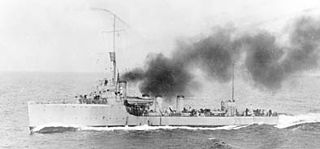
HSwMS Wachtmeisterwas the second and last of the Wrangel-class destroyers built for the Royal Swedish Navy during World War I. Completed in 1918, the ship was rammed by another Swedish destroyer four years later. At the beginning of World War II in 1939 she was assigned to the Gothenburg Squadron. Wachtmeister was decommissioned in 1947 and was subsequently sold for scrap in 1950.

The Sverige-class coastal defence ships were a class of coastal defence ships that, at the time of introduction, were the largest ships to serve in the Swedish Navy. Their design was completely new and was influenced by the ships of the time. Their armament consisted of four 283 mm (11 in)/45 cal. Bofors guns in two turrets and eight 152 mm (6 in) Bofors guns in one double and six single turrets. During the Second World War they were the backbone of the Swedish Navy.

The G3 class was a class of battlecruisers planned by the Royal Navy after the end of World War I in response to naval expansion programmes by the United States and Japan. The four ships of this class would have been larger, faster and more heavily armed than any existing battleship. The G3s have been considered to be proper "fast battleships" since they were well-balanced designs with adequate protection. Nonetheless the class was officially designated as a "battlecruiser" due to their higher speed and lesser firepower and armour relative to the planned N3-class battleship design. The G3s would have carried nine 16-inch (406 mm) guns and were expected to achieve 32 knots, while the N3s would carry nine 18-inch (457 mm) guns on the same displacement at the expense of speed.
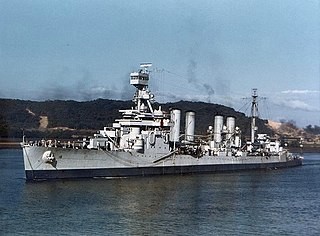
The Omaha-class cruisers were a class of light cruisers built for the United States Navy. They were the oldest class of cruiser still in active service with the Navy at the outbreak of World War II, being an immediate post-World War I design.

Tsesarevich was a pre-dreadnought battleship of the Imperial Russian Navy, built in France at the end of the 19th century. The ship's design formed the basis of the Russian-built Borodino-class battleships. She was based at Port Arthur, northeast China, after entering service and fought in the Russo-Japanese War of 1904–1905. Tsesarevich was torpedoed during the surprise attack on Port Arthur and was repaired to become the flagship of Rear Admiral Wilgelm Vitgeft in the Battle of the Yellow Sea and was interned in Qingdao after the battle.
The Le Hardi class consisted of twelve destroyers built for the Marine Nationale during the late 1930s. Only seven ships were ultimately completed while construction of the remaining five ships was interrupted by the French defeat in the Battle of France in May–June 1940 and were never finished. The seven ships that were seaworthy sailed for French North Africa to prevent their capture by the advancing Germans. Several ships later sailed for French West Africa where Le Hardi played a minor role in the Battle of Dakar in September. The Germans captured two ships that were still under construction and attempted to finish them both before abandoning the effort in 1943.
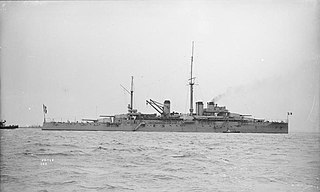
Courbet was the lead ship of her class of four dreadnought battleships, the first ones built for the French Navy. She was completed shortly before the start of World War I in August 1914. She spent the war in the Mediterranean, where she helped to sink an Austro-Hungarian cruiser, covered the Otranto Barrage that blockaded the Austro-Hungarian Navy in the Adriatic Sea, and often served as a flagship. Although upgraded several times before World War II, she was not considered to be a first-line battleship by the 1930s and spent much of that decade as a gunnery training ship.

Jean Bart was the second of four Courbet-class battleships, the first dreadnoughts built for the French Navy. She was completed before World War I as part of the 1910 naval building programme. She spent the war in the Mediterranean and helped to sink the Austro-Hungarian protected cruiser Zenta on 16 August 1914. She was torpedoed by an Austro-Hungarian submarine in December and steamed to Malta for repairs that required three and a half months. She spent the rest of the war providing cover for the Otranto Barrage that blockaded the Austro-Hungarian Navy in the Adriatic Sea and sometimes served as a flagship.
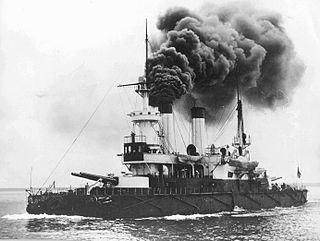
The Admiral Ushakov class were coastal defense battleships built for the Imperial Russian Navy during the 1890s to counter armored ships of the Swedish Navy. All three ships were stationed in the Baltic Sea when the Russo-Japanese war began and sailed with the Baltic Fleet around the Cape of Good Hope to the Pacific. Two ships were captured by the Japanese and one was scuttled during the Battle of Tsushima.
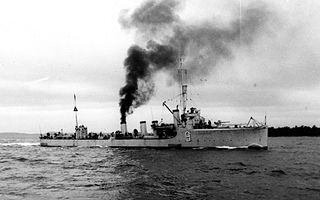
The Wrangel class was a class of four destroyers built for the Royal Swedish Navy during World War I of which two were cancelled before they were laid down. Completed in 1918, they were in service until shortly after the end of World War II in 1945. Wrangel served as a target ship before she was sunk in 1960 and Wachtmeister was broken up for scrap in 1951.

HSwMS Wrangel was the lead ship of her class of two destroyers built for the Royal Swedish Navy during World War I. At the beginning of World War II in 1939 she was assigned to the Gothenburg Squadron. The ship was stricken in 1947 and was subsequently used as a pilot and target ship. Wrangel sunk as a target in 1960.

HSwMS Öland was the lead ship of the two ship Öland-class of destroyers which served with the Royal Swedish Navy. Larger and more stable than previous Swedish destroyers, the vessel was launched on 15 December 1945. Armament was based around two twin mounting for semi-automatic 120 mm (4.7 in) guns, an extensive anti-aircraft defence of seven 40 mm (1.6 in) and eight 25 mm (1.0 in) guns and a quadruple 375 mm (15 in) anti-submarine rocket launcher, as well as torpedoes and mines. The ship was upgraded in 1960, which involved the addition of a Squid anti-submarine mortar amongst other alterations, and reclassified as a frigate in 1974, until ultimately being retired on 1 July 1978 as part of a strategy to remove larger combat vessels from the fleet.

HSwMS Uppland was a Öland-class destroyer which served with the Royal Swedish Navy. Larger and more stable than previous Swedish destroyers, the vessel was launched on 15 December 1948. Armament was based around two twin mounting for semi-automatic 120 mm (4.7 in) guns, an extensive anti-aircraft defence of seven 40 mm (1.6 in) and eight 20 mm (1 in) guns and a quadruple 375 mm (15 in) anti-submarine rocket launcher, as well as torpedoes and mines. The ship was upgraded in 1963, which involved the addition of a helicopter platform amongst other alterations, and reclassified as a frigate in 1974, until ultimately being retired on 1 July 1978 as part of a strategy to remove larger combat vessels from the fleet.


















